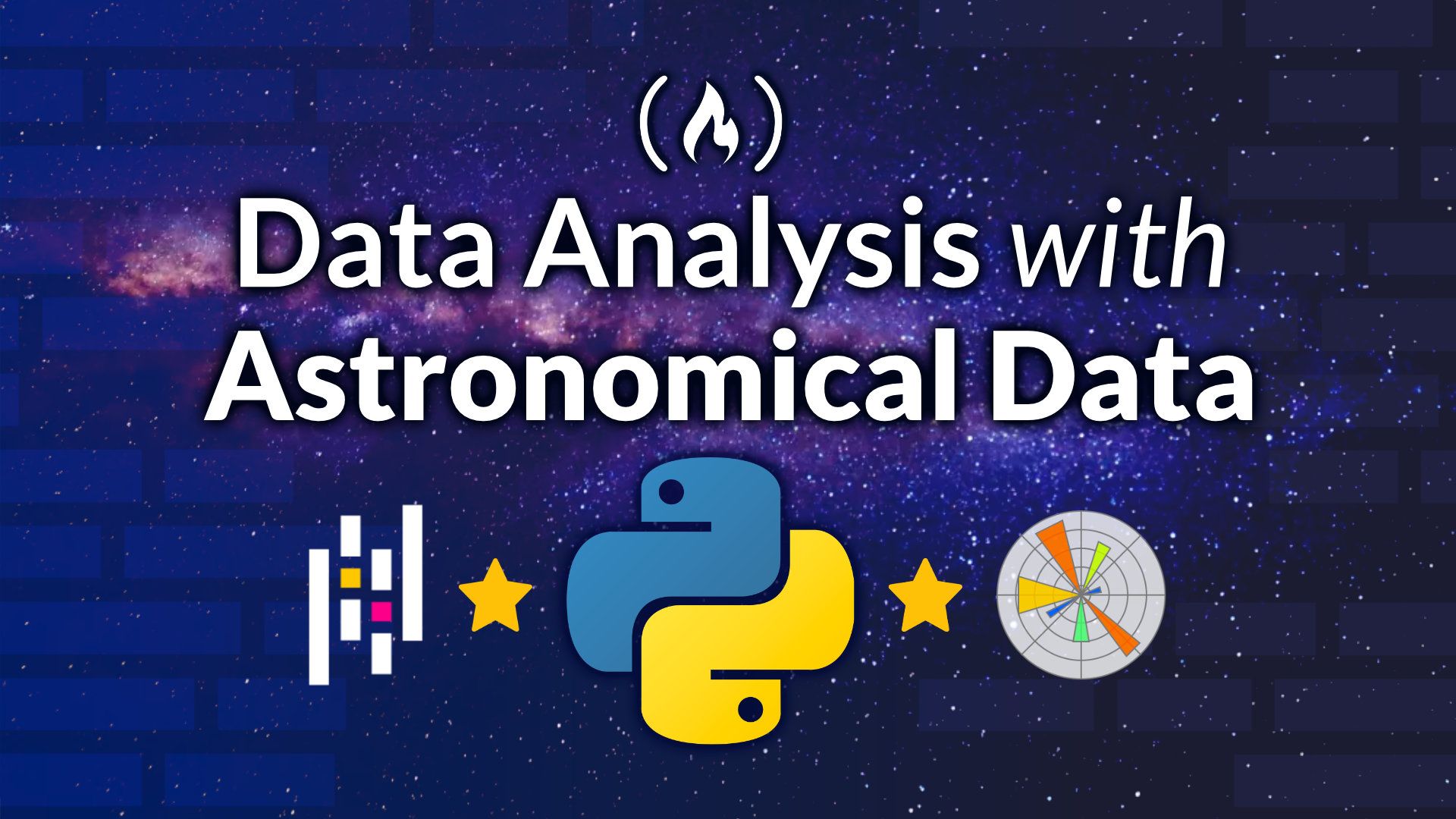Are you fascinated by both Python and the night sky?
We just posted a course on the freeCodeCamp.org YouTube channel that will teach you how to use Python to analyze and visualize astronomical Data. This course was created by Spartificial, whose mission is to provide engineering education in the most engaging way.
This course is a journey through the universe of data analysis and visualization, tailored specifically for astronomical data. The course covers everything from the basics of Python programming to advanced image processing techniques.
Here is what you will learn in each module of the course.
Module 1: Starting with Python
Begin your adventure with Python, starting from the very basics. You'll get acquainted with Python programming using Google Colab. Learn about variables, data types, control flow, f-strings, user inputs, and functions. This module lays a strong foundation for handling astronomical data efficiently.
Module 2: Tabular Data Visualization
Dive into the world of tabular data with tools like Pandas, Matplotlib, and Seaborn. This module teaches you to import libraries, analyze star color data, detect outliers, and create compelling visualizations like line plots and Hertzsprung-Russell diagrams. It's all about making sense of complex astronomical datasets.
Module 3: Image Data Visualization
Explore the fascinating realm of astronomical image data. Learn about FITS files and use Python to bring galaxies like M31 to life on your screen. You'll delve into image processing techniques such as MinMax and ZScaleInterval scaling, enhancing your ability to interpret celestial images.
Module 4: Image Processing | Apply Filters and Extracting Features
This module takes you deeper into the world of image processing. Learn about convolution operations, Gaussian kernels, and feature enhancement. You'll discover techniques for identifying and extracting features from astronomical images, skills that are crucial for research and analysis.
This course offers hand-on learning. It emphasizes a practical approach, filled with examples and real-world datasets. You will get step-by-step guidance. This ensures a solid understanding of each concept, regardless of your previous experience level.
Whether you're an astronomy enthusiast, a seasoned researcher, or a curious programmer, this course offers an opportunity to enhance your skills and dive into the world of astronomical data analysis.
Watch the full course on the freeCodeCamp.org YouTube channel (7-hour watch).

